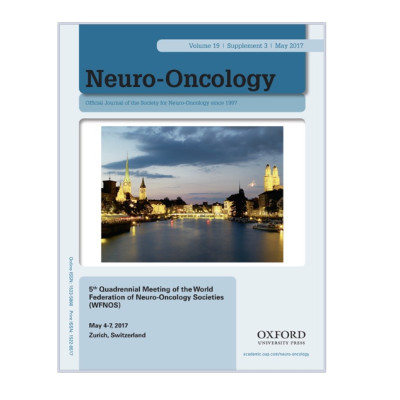Publication
Malignant transformation of low-grade gliomas. Prognostic implications from mathematical model
M.U. Bogdanska, M. Bodnar, M.J. Piotrowska, M. Murek, P. Schucht, J. Beck, A. Martínez-Gonzalez, V.M. Perez-Garcia
Neuro-Oncology 19(3), iii85-iii85 (2017)
MOLAB authors
Abstract
Introduction: The malignant transformation (MT) (or progression) of low-grade gliomas (LGG) into higher-grade ones is the beginning of the end for patients suffering this disease. The MT has been discussed to be either due to the acquisition of new mutations for LGG cells leading to more aggressive phenotypes and genotypes, or due to an irreversible damage to the tumour microenvironment that leads to hypoxia and the growth of increasingly aggressive tumour cells. Since therapeutic decisions depend on the tumour grade, many efforts have been devoted to the radiological identification of signatures of the transformation using different imaging techniques. Our goal was to study if mathematical predictive models were able to predict the time to MT in advance on the basis of imaging data. MATERIALS & METHODS: An evolutive mathematical model based on partial differential equations describing the growth of LGG cells and their transformation to a high grade tumour cells was developed using a minimal number of biological parameters. The model was fitted to longitudinal imaging data (T2 and/or FLAIR) of LGG patients and used to predict the evolution of the disease. Results: Patient-specific parameters where found for each tumour. Using these parameters we computed the tumour volumetric dynamics, velocity of growth and predicted the time to malignant transformation. Both the average proliferation rate of LGG cells and the maximal initial tumour cell density were found to be strongly correlated with the time to MT. We found several quantitative measures from imaging data which could be used as imaging biomarkers indicative of increased risk of progression. The mathematical model were also used to test if novel chemotherapy schedules could be used to delay the time to MT. Conclusions: The combination of standard imaging techniques and mathematical modelling could predict the risk of progression of LGGs. Further mathematical studies aimed at improving the understanding of the evolution of these tumours around the onset malignant transformation and revising the impact of optimised therapeutical schedules on the tumour progression are under way.
FUNDING: This work has been partially supported by James S. Mc. Donnell Foundation (USA) 21st Century Science Initiative in Mathematical and Complex Systems Approaches for Brain Cancer [Collaborative award 220020450 and planning grant 220020420] and MINECO/FEDER (Spain) [MTM2015-71200-R]. National Science Centre (Poland) supported the work of MUB [grant no. 2015/17/N/ST1/02564], MB and MJP [grant no. 2015/19/B/ST1/01163].















